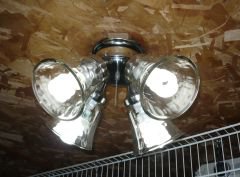- Joined
- Apr 28, 2014
- Messages
- 3,590
What I'm thinking is, since I can't see the wire running down the wall to the switches, and since this circuit has only lights on it,
put a AFCI in the panel to cover that unknown. Actually I just don't wan't to tear apart the wall - and remove all the shelves and such.
These two (4) bulb fixtures, (4) Fluorescent twin-tubes, and the LED outside.
put a AFCI in the panel to cover that unknown. Actually I just don't wan't to tear apart the wall - and remove all the shelves and such.
These two (4) bulb fixtures, (4) Fluorescent twin-tubes, and the LED outside.



